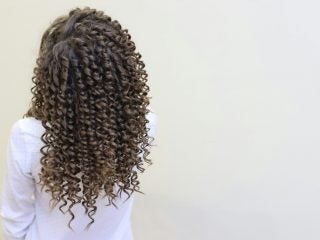For those who wish to reduce the discomforts associated with getting a tattoo, tattoo numbing cream is a widely used choice. Such creams have the ability to temporarily desensitize the area of the skin that is being inked, making the tattooing experience more bearable for the individual. In this article, we will look at the various kinds of tattoo numbing creams accessible, their functioning, and the pros and cons of using them.
Types of Tattoo Numbing Creams
It is possible to find a range of tattoo numbing creams available commercially, each of them containing its own specific combination of ingredients and qualities. Among the most common varieties of these creams are:
NumbMyTattoo: These topical creams are the most widespread form of tattoo numbing agents. They are formulated with lidocaine, a local anesthetic that acts by obstructing the nerve signals that cause pain.
EMLA: For those seeking a skin numbing effect before getting a tattoo, Emla cream is an often utilized option. This topical cream is composed of a combination of lidocaine and prilocaine, which collaborate synergistically to lessen sensitivity in the skin.
Dr. Numb: Dr. Numb is a topical anesthetic containing lidocaine as the key component. It has an extended period of numbness.
Hush Anesthetic: Hush is an anesthetic gel that is utilized prior to getting a tattoo. It is composed of a special blend of components that collaborate to desensitize the skin and minimize the discomfort.
How Tattoo Numbing Creams Work
Tattoo numbing creams are effective in numbing the skin in anticipation of a tattoo. This numbing effect is attained by blocking the nerve impulses that cause discomfort. The cream’s active ingredients permeate the skin and latch onto the nerve cells, preventing them from transmitting pain signals to the brain. As a result, the person receiving the tattoo experiences a temporary loss of sensation in the area of the skin that is being tattooed, making the tattooing process more bearable.
Benefits of Using Tattoo Numbing Creams
Taking advantage of tattoo numbing creams presents multiple benefits, such as:
Reduced pain and discomfort: One of the main advantages of utilizing a numbing cream while getting a tattoo is that it can markedly lessen the suffering and distress related to getting inked. This can make the tattooing process more bearable for the individual receiving the tattoo, enabling them to stay still throughout the entire procedure without feeling extreme agony or agony.
Faster tattooing process: Due to the fact that the agony and distress linked with getting inked is minimized, the tattooing procedure can be expedited. This can be especially advantageous for those who are inking a large or intricate tattoo.
Increased safety: Applying a numbing cream prior to getting a tattoo can improve the safety of the procedure. Since the discomfort and pain associated with it is lessened, the person being tattooed is less likely to shift or jerk during the process, which could lead to complications or errors.
Risks of Using Tattoo Numbing Creams
Although there are advantages to utilizing tattoo numbing creams, there are also a few potential dangers that should be taken into consideration. These dangers may include:
Allergic reactions: It is possible that individuals may be sensitive to the components in the tattoo numbing cream, which could lead to itching, redness, or rash development.
Overuse: Abusing tattoo numbing creams can lead to a permanent desensitization of the skin in the area of the tattoo. This can be a risky situation if the person cannot physically feel pain when they injure themselves or have a problem with the tattoo.
Interference with healing: Applying a numbing cream prior to getting a tattoo can impede the healing process. This could cause issues such as infections and scarring, preventing the tattoo from recovering correctly.
Effect on tattoo quality: Applying a numbing cream prior to getting a tattoo can have an adverse effect on the quality of the design. It can be challenging for the tattoo artist to accurately trace the lines of the tattoo, resulting in potential imperfections or an irregular design.
Risk of infection: Utilizing a numbing cream for tattoos carries the potential for infection. If improper application or insufficient removal of the cream from the epidermis after the tattooing process is finished, it can augment the probability of infection.
Conclusion
Tattoo numbing cream is an increasingly popular option for those who want to diminish the discomfort when getting a tattoo. While it offers some advantages such as less pain and speedier tattooing, it also carries certain risks like allergic reactions, interference with healing, and impact on tattoo quality. Therefore, it is essential to consult a tattoo artist and a doctor before using a numbing cream and to follow the usage directions precisely. Additionally, one should bear in mind that not all numbing creams are FDA-approved and may contain ingredients that are detrimental for skin application.

















